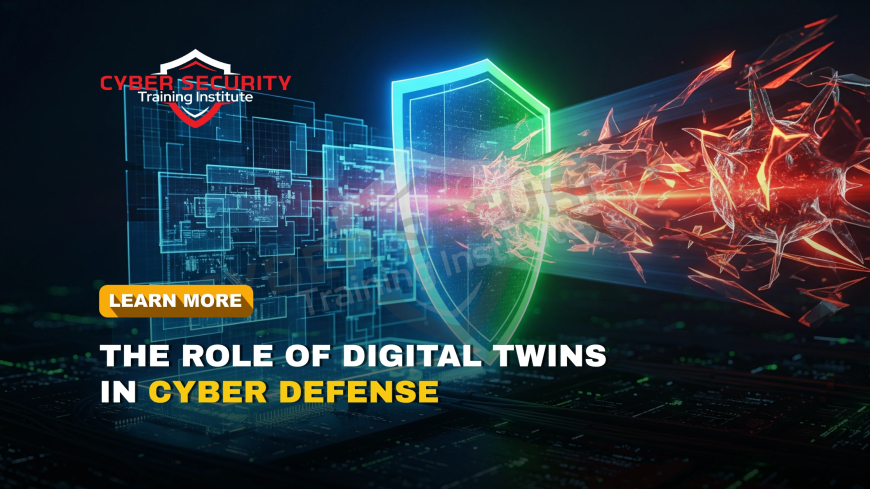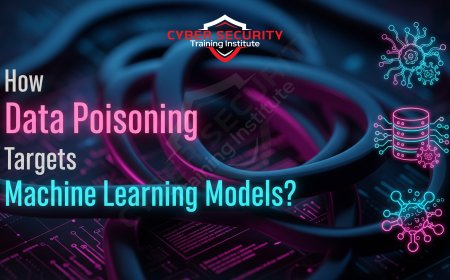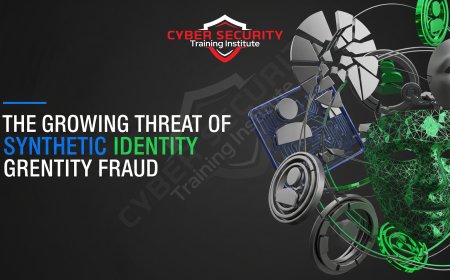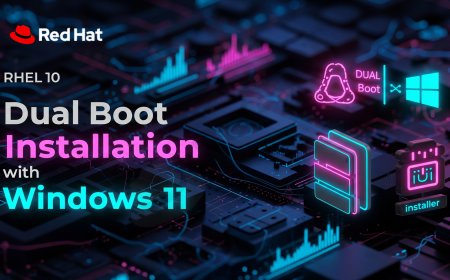What Role Do Digital Twins Play in Cybersecurity of Smart Cities?
Imagine waking up in a bustling metropolis where traffic lights sync perfectly with your morning commute, energy grids adjust in real-time to save power, and public safety systems predict and prevent issues before they escalate. This is the promise of smart cities—urban areas powered by technology to make life easier and more efficient. But what happens when cybercriminals target these interconnected systems? A single breach could grind the city to a halt, compromising everything from transportation to emergency services. That's where digital twins come in, acting as virtual guardians that help protect these vital networks. In this blog post, we'll explore how digital twins are revolutionizing cybersecurity in smart cities, making complex ideas accessible even if you're new to the topic.

Table of Contents
- What Are Smart Cities?
- Understanding Digital Twins
- Cybersecurity Challenges in Smart Cities
- How Digital Twins Enhance Cybersecurity
- Real-World Applications and Examples
- Benefits and Advantages
- Potential Challenges and Solutions
- Comparison: Traditional vs. Digital Twin Approaches
- Future Outlook
- Conclusion
- FAQs
What Are Smart Cities?
Smart cities are urban environments that use technology to improve the quality of life for residents. They integrate sensors, data analytics, and connected devices to manage resources more effectively. Think of it as giving a city a nervous system—devices collect data on everything from air quality to traffic flow, and this information helps city officials make informed decisions.
At the heart of smart cities is the Internet of Things (IoT), which connects everyday objects to the internet. For example, streetlights that dim when no one is around save energy, or waste bins that signal when they're full to optimize collection routes. These innovations make cities more sustainable and responsive.
However, with great connectivity comes great responsibility. The more devices are linked, the more entry points there are for potential threats. This sets the stage for why cybersecurity is crucial in these setups.
Smart cities aren't just about gadgets; they're about creating ecosystems where data flows seamlessly to benefit everyone. From reducing pollution through better traffic management to enhancing public health with real-time monitoring, the possibilities are endless. But to realize these benefits, we need robust protection against digital dangers.
As we dive deeper, it's clear that smart cities represent the future of urban living, but they require innovative tools to stay secure.
Understanding Digital Twins
A digital twin is essentially a virtual replica of a physical object, system, or process. It's like having a mirror image in the digital world that behaves just like the real thing. This concept originated in manufacturing but has expanded to various fields, including urban planning.
In simple terms, a digital twin uses real-time data from sensors on the physical counterpart to simulate its behavior. For instance, if you have a bridge in a city, its digital twin would monitor stress, weather impacts, and traffic loads virtually.
Digital twins rely on technologies like AI (artificial intelligence, which is computer systems that can perform tasks that typically require human intelligence) and machine learning (a subset of AI where systems learn from data to improve over time). These help predict outcomes and test scenarios without risking the actual infrastructure.
Why are they useful? They allow for experimentation in a safe environment. You can tweak variables, run simulations, and see results instantly. This is particularly valuable in complex systems like cities, where changes can have widespread effects.
Digital twins aren't static; they evolve as new data comes in, making them dynamic tools for ongoing management. In the context of smart cities, they provide a holistic view, integrating data from multiple sources to create a comprehensive model.
Understanding this foundation helps us see how digital twins can be pivotal in addressing security concerns, which we'll explore next.
Cybersecurity Challenges in Smart Cities
Smart cities face unique cybersecurity hurdles due to their interconnected nature. With thousands of devices communicating, a vulnerability in one can compromise the entire network.
Common threats include:
- Hacking into traffic systems to cause chaos.
- Stealing sensitive data from public Wi-Fi or surveillance cameras.
- Disrupting power grids through ransomware (malware that locks systems until a ransom is paid).
- Exploiting outdated software in IoT devices.
These challenges are amplified because smart city infrastructure often involves legacy systems—older technology that's hard to update—mixed with new devices. This creates inconsistencies in security protocols.
Moreover, the sheer volume of data generated poses privacy risks. If not protected, personal information could be misused.
Human factors also play a role; employees might unknowingly introduce risks through phishing emails or weak passwords.
Addressing these requires proactive measures, and that's where innovative solutions like digital twins shine, offering a way to anticipate and mitigate threats before they materialize.
How Digital Twins Enhance Cybersecurity
Digital twins play a transformative role in bolstering cybersecurity for smart cities by providing a sandbox for testing and monitoring.
First, they enable simulation of cyber attacks. You can launch virtual threats against the digital model to see how the system responds, identifying weaknesses without endangering real assets.
Second, real-time monitoring is enhanced. The twin mirrors the physical system, detecting anomalies that might indicate a breach, like unusual data patterns in a water supply network.
Integration with intrusion detection systems (IDS) is another key aspect. IDS monitor network traffic for suspicious activity, and when paired with digital twins, they can simulate responses to improve accuracy.
Digital twins also facilitate predictive maintenance for security. By analyzing trends, they can forecast potential vulnerabilities, allowing teams to patch them proactively.
Furthermore, they support training. Cybersecurity teams can practice responses in the virtual environment, building skills without real-world consequences.
Overall, digital twins shift cybersecurity from reactive to proactive, using data-driven insights to stay ahead of threats.
Real-World Applications and Examples
Digital twins are already making waves in smart cities around the globe.
In Singapore, the Virtual Singapore project uses digital twins for urban planning, including simulating security scenarios to enhance public safety.
Barcelona employs digital twins to manage traffic and energy, incorporating cybersecurity layers to protect against disruptions.
In the U.S., cities like Los Angeles are exploring digital twins for infrastructure monitoring, with a focus on cyber resilience in utilities.
Another example is in healthcare within smart cities, where digital twins of hospital systems test cyber defenses against attacks on medical devices.
Companies like Siemens and IBM offer digital twin platforms tailored for urban security, helping cities model entire networks.
These applications show that digital twins aren't just theoretical; they're practical tools delivering real results in safeguarding urban environments.
Benefits and Advantages
The advantages of using digital twins in cybersecurity are numerous and impactful.
- Cost savings: Fixing issues virtually is cheaper than dealing with real breaches.
- Improved efficiency: Real-time insights lead to faster threat detection and response.
- Enhanced collaboration: Teams from different departments can work on the same model.
- Better scalability: As cities grow, twins can expand without physical limitations.
- Increased resilience: Systems become more robust against evolving threats.
They also promote innovation, allowing cities to experiment with new technologies securely.
In terms of privacy, well-designed twins can anonymize data, protecting user information while still providing valuable insights.
Ultimately, these benefits contribute to safer, more sustainable urban living.
Potential Challenges and Solutions
While promising, implementing digital twins isn't without hurdles.
One major challenge is data security for the twin itself. If hacked, it could reveal sensitive information about the physical system. Solution: Use encryption (coding data to prevent unauthorized access) and access controls.
Integration complexity arises when combining diverse data sources. Solution: Standardize protocols and use AI for seamless merging.
High initial costs can deter adoption. Solution: Start small with pilot projects and scale up as benefits appear.
Skill gaps in teams. Solution: Invest in training and partner with experts.
Ethical concerns, like data privacy. Solution: Adhere to regulations like GDPR and conduct regular audits.
By addressing these, cities can fully leverage digital twins for cybersecurity.
Comparison: Traditional vs. Digital Twin Approaches
| Aspect | Traditional Cybersecurity | Digital Twin-Enhanced Cybersecurity |
|---|---|---|
| Threat Detection | Reactive, after incidents occur | Proactive, through simulations |
| Testing | Limited to live environments, risky | Safe virtual testing |
| Cost | High due to real-world fixes | Lower long-term costs |
| Scalability | Challenging with growth | Easily scalable virtually |
| Innovation | Slow due to risks | Encourages experimentation |
This table highlights how digital twins offer superior approaches in key areas.
Future Outlook
Looking ahead, digital twins will likely become standard in smart city cybersecurity. Advances in AI and 5G will make them even more powerful, enabling faster data processing and more accurate simulations.
We might see twins integrated with blockchain for added security, ensuring data integrity.
As cities evolve, digital twins could facilitate global collaborations, sharing best practices across borders.
However, ongoing research is needed to address emerging threats, like quantum computing challenges.
The future is bright, with digital twins paving the way for resilient urban futures.
Conclusion
In wrapping up, digital twins are game-changers in the cybersecurity landscape of smart cities. They provide virtual platforms for testing, monitoring, and predicting threats, turning potential vulnerabilities into opportunities for strengthening defenses. From simulating attacks to enabling real-time responses, their role is multifaceted and essential. While challenges exist, the benefits far outweigh them, promising safer, smarter urban living. As technology advances, embracing digital twins will be key to protecting our connected world.
What is a digital twin?
A digital twin is a virtual copy of a physical object or system that uses real-time data to mirror its behavior and performance.
How do smart cities benefit from digital twins?
They help in planning, resource management, and simulating scenarios to improve efficiency and sustainability.
What are the main cybersecurity threats in smart cities?
Threats include hacking IoT devices, data breaches, and disruptions to critical infrastructure like power grids.
Can digital twins prevent cyber attacks?
While they can't prevent all attacks, they help identify and mitigate risks through simulations and monitoring.
How do digital twins simulate threats?
By creating virtual scenarios where attacks are launched on the model to test defenses without real harm.
What technologies power digital twins?
Mainly AI, machine learning, and IoT for data collection and analysis.
Are digital twins secure themselves?
They can be, with proper encryption and access controls, but they need their own security measures.
What is an example of digital twins in action?
Singapore's Virtual Singapore uses them for urban planning and security simulations.
How do digital twins improve response times?
By providing real-time data and predictive insights, allowing quicker threat detection.
What challenges do cities face in adopting digital twins?
High costs, integration issues, and skill shortages are common hurdles.
Can digital twins help with privacy in smart cities?
Yes, by anonymizing data and ensuring compliance with privacy laws.
How are digital twins different from simulations?
Digital twins use live data for ongoing mirroring, while simulations are often one-off models.
What role does AI play in digital twins for cybersecurity?
AI analyzes patterns to detect anomalies and predict potential breaches.
Are there standards for digital twins in cities?
Emerging standards exist, but they're still developing through organizations like ISO.
How can small cities implement digital twins?
Start with pilot projects focusing on key areas like traffic or utilities.
What is the cost of setting up a digital twin?
It varies, but initial investments can be offset by long-term savings in security and efficiency.
Do digital twins require constant updates?
Yes, to stay accurate, they need regular data feeds and software updates.
How do digital twins integrate with existing systems?
Through APIs (application programming interfaces) and standardized data formats.
What future trends involve digital twins?
Integration with 6G, advanced AI, and global urban networks for shared security.
Can individuals benefit from digital twins in smart cities?
Indirectly, through safer streets, better services, and enhanced privacy protections.
What's Your Reaction?
 Like
0
Like
0
 Dislike
0
Dislike
0
 Love
0
Love
0
 Funny
0
Funny
0
 Angry
0
Angry
0
 Sad
0
Sad
0
 Wow
0
Wow
0







![How to Install RHEL 10 on VMware/VirtualBox [Tutorial]](https://www.cybersecurityinstitute.in/blog/uploads/images/202509/image_430x256_68b56dc967a4a.jpg)








